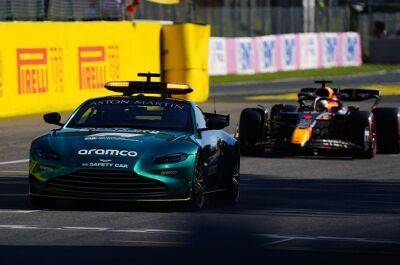FIA sticks to guns on F1 ‘bouncing’ rule change despite top teams’ objections
The mathematics may appear impenetrable but Formula One’s purpose in imposing a new rule mid-season could not be more clear. This weekend at the Belgian Grand Prix the FIA has explicitly shown it will not tolerate a risk of long-term head trauma to its drivers.
Its decision has not been popular with some teams as the knock-on from what was imposed for safety reasons may yet also have an effect on the competitive order. The results will be seen this weekend at Spa-Francorchamps but should not detract from what has been a steadfast commitment to put driver safety first.
The issue that has dominated the season is that of cars “porpoising” and bouncing on the track under the new regulations. With the cars using ground effect for downforce and running as low to the ground as possible with very stiff setups, two fundamental problems emerged. Porpoising is a violent, vertical jarring caused by a stall in the aerodynamics; the similar but different issue of bouncing is caused by the low ride heights smashing the car into the ground over uneven track surfaces.
The porpoising has been largely eliminated but the bouncing remains and drivers spoke out, fearing for the potential ill effects on health. After a particularly brutal weekend at Baku some insisted the problem could not be allowed to continue.
The FIA reacted with two parts of a new technical directive which come into play this weekend. The first is the use of an “oscillation metric”, an algorithm that measures the jarring and sets a threshold beyond which teams cannot go. The second is a tightening of the rules on the rigidity of the floor, to prevent ride heights that are too low.
Both Ferrari and Red Bull are believed to have been exploiting a loophole in the rules that


